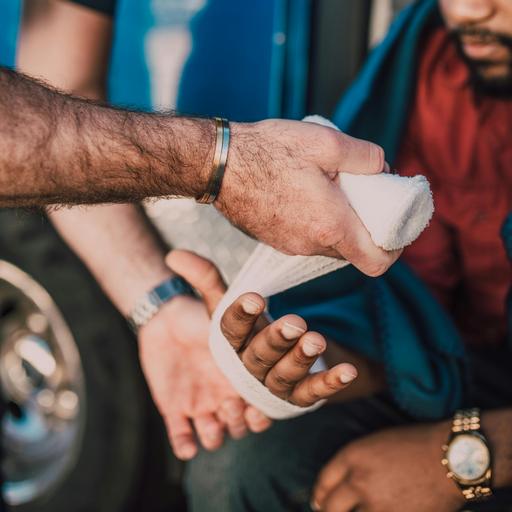How To Prevent And Look For Skin Cancer

According to the Skin Cancer Foundation (www.skincancer.org), skin cancer is the most common cancer diagnosed in the United States. One in five Americans will develop a skin cancer. While it is true that skin cancer in African Americans is not as common as it is in other ethnicities, that does not mean that it cannot occur. Furthermore, when it does occur, it unfortunately tends to be more aggressive leading to a less favorable outcome. Take, for example, Reggae legend Bob Marley. He died of a melanoma which was initially thought to be a soccer injury on his toe, but ultimately spread to his lungs and brain causing his death.
So what do you need to know to protect yourself and minimize your risk of developing skin cancer?
Skin 101
Skin is our largest organ. It is comprised of 3 layers: the epidermis, dermis and fat. The epidermis is the outermost layer containing pigment producing cells called melanocytes. All skin, regardless of color has the same number of melanocytes. What differs is the activity of these cells which also accounts for the range of skin color. Melanocytes in skin of color produce more pigment (melanin) than the melanocytes in people with lighter skin. Melanin helps to protect skin from damaging UV rays which are one of the risk factors for skin cancer, sun damage and wrinkles. The abundance of melanin in dark skin tones provides a small level of sun protection (SPF) of about 13 as compared to an SPF of 3 in Caucasian skin. This discrepancy illustrates why skin cancer is more prevalent in fair skin and leads to the common misperception that dark skin doesn’t get skin cancer. ALL skin–regardless of color and tone–is at risk for skin cancer.
The three most common types of skin cancer include:
-
Basal Cell Carcinoma (BCC) – This is the most common form of skin cancer. It is the result of abnormal growth of basal cells, which are found at the lower layers of the skin.
-
Squamous Cell Carcinoma (SCC) – Second most common form of skin cancer due to abnormal growth of squamous cells located near the surface of the skin.
-
Malignant Melanoma (MM) – Less common, but more serious due to its ability to spread to other organs if not treated early.
Common risk factors for all of these skin cancers include cumulative sun exposure (everything you have been doing outdoors since you were a kid) which is why sun protection is vitally important. Each type of skin cancer has additional risk factors, many of which are unrelated to sun exposure.
I want to debunk some common myths about skin cancer in skin of color and share some tips on how to minimize your risk.
Myth #1: Black People Don’t Get Skin Cancer
Unfortunately, many patients and some physicians believe people with brown skin cannot get skin cancer. A patient may not think that the funny looking growth could be skin cancer because “black people don’t get skin cancer.” Some medical practitioners a) may not discuss sun protective behaviors with all patients; b) are not looking or recognizing atypical lesions in brown skin and c) are not having those same conversations with patients of color about risk factors and protection from skin cancers that are had with Caucasian patients.
Advice : On your birthday, check out your birthday suit! Take a look at every crack and crevice — in your armpit, in your groin, between your cheeks everywhere — and make sure you know what is there. If you are aware of your “spots” you will be aware when they change. Consider taking some photos of moles as a frame of reference for the next self-check. Look for change in shape, color or behavior. If you notice any changes, please visit Huedco.com/Vaseline to find medical resources and book an appointment with a board-certified dermatologist near you.
Myth #2: Skin Cancer Only Happens In Sun-Exposed Areas
Quite the opposite is true. In African Americans, skin cancer, particularly SCC and MM are more likely to occur where the sun doesn’t shine—in the groin, on the palms and soles of feet and in the crease of your buttocks.
Some skin conditions pose a risk for skin cancer. Those with chronic inflammation, burns and scarring, or patients with a history of radiation therapy, are susceptible to skin cancers such as SCC squamous cell carcinoma.
Advice: Know and listen to your body. If what looks like a bug bite or a pimple is not healing in a reasonable amount of time (1-2 weeks) or, if it healed and now it’s starting to bleed for no reason, this is not normal. This is an indication that it needs to be looked at by a board-certified dermatologist (www.aad.org).
Myth #3: Dark Skin has natural SPF and does not need sunscreen
Having brown skin does provide slight protection from the sun. Skin of color is well known to age more gracefully than Caucasian skin by showing fewer and delayed signs of aging (Black don’t crack). However just because you have darker skin does not mean your genetics do not put you at risk. Melanoma can run in families, so it’s important to note if any other family members have or had the disease.
Your overall health status also plays an important role in one’s skin cancer risk factors. Skin is our largest immune organ and when we our immune system is compromised through other medical conditions (organ transplantation, autoimmune diseases) or medications used to treat these conditions (prednisone) you have an increased risk of skin cancer.
Myth #4: Sunscreen Is Just For The Beach
For sunscreen to provide long lasting benefit it should be used every day. If you see the sun on your drive or walk to work, you should be wearing sunscreen. Most people do not apply enough or fail to reapply their sunscreen. Regardless of what sunscreen you use, it will break down in an effort to protect you so if you put sunscreen on in the morning then meet your friend at the outdoor café for lunch, you have no sun protection.
Advice : Ideally sunscreen should be applied/reapplied every 2-3 hours. Sunscreen should be applied to all sun-exposed body parts so if you are out doors in a t shirt and shorts you should apply a full ounce (shot glass) in order to garner the level of sun protection on the bottle. Applying a fraction of what was intended for protection means that you have a fraction of protection.
Choose a moisturizer with a broad-spectrum SPF 30 for daily use. The best sunscreen is the one you will use. Make it a habit, just like brushing your teeth.
Preventative care, knowing what to look for, and taking good care of your skin overall are some of the best ways to mitigate your skin cancer risk. Today is a great day to start caring for your skin by scheduling an appointment with a board-certified dermatologist through our directory.


